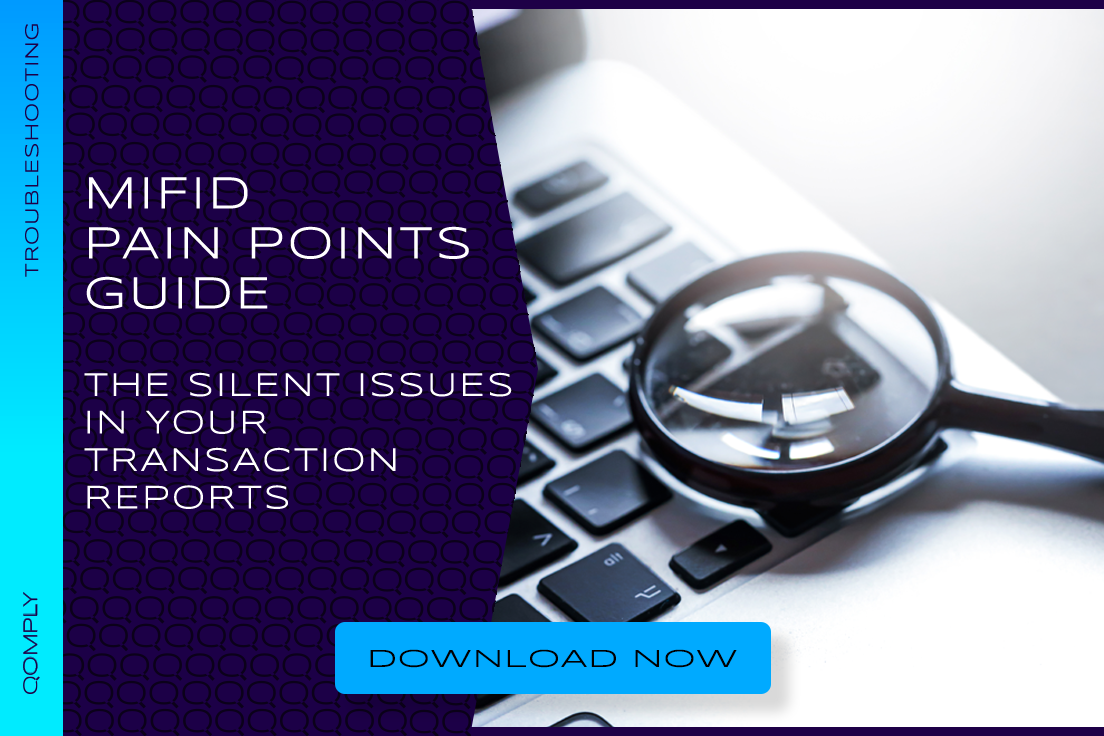Block versus Fill Reporting
Understanding FCA expectations of firms determining whether to report at a block or fill level
MiFID Transaction Reporting | Regulatory Insights from Bovill Regulatory Consultants
9 June 2022
Guest Contributor, Bovill Regulatory Consultants, discuss regulators expectations of reporting allocations in MiFID transaction reports.
Just before MiFID II came into force, at the end of 2017, the FCA released a Market Watch paper that contained information essential to compliance with the transaction reporting regime. It explained how firms should determine whether to report at a block or fill level. Despite the time elapsed since this paper, many in the industry still struggle to align with it.
In this paper, the FCA said:
The transaction reports of an investment firm in a chain should accurately reflect the elements of the execution that have been confirmed as an execution by your immediate counterparty.
Whether you transaction report at the block or allocation level depends on what your immediate counterparty confirms as executions. If your immediate counterparty confirms the block as the execution you should report the block. If each allocation or market execution is confirmed to you as an execution, then you should also report each allocation or market execution.
Block vs Fill: What’s the difference?
When an investment firm sends an order to a broker, the trade can be completed at a block or at a fill level.
If completed at a block level, the investment firm would receive just one execution confirmation from the broker detailing the price achieved for the total quantity traded. This remains the case even if the broker required multiple executions to complete the order; if they only confirm execution to the investment firm when they have finished trading, the investment firm has traded at a block level. The investment firm should submit a report covering this single block transaction.
If completed at a fill level, the investment firm would receive a confirmation for each portion of the order executed by the broker. So, if the broker confirmed each of the aforementioned executions back to the investment firm, the firm would be executing at a fill level. Each such fill would need to be reported to the FCA.
For example, Firm A sends an order to Firm B. Firm B executes the order over the course of the day with multiple executions. If Firm B does not confirm execution until they are finished trading, Firm A will report at a block level, submitting a report to cover this single block trade.
If, however, Firm B confirms each of the aforementioned executions, Firm A will need to report at fill level. Reports will need to be submitted to the FCA for each fill.
Identifying the right approach
Although the FCA approach seems straightforward on the face of it, many firms have nonetheless not aligned with it.
This has occurred for a number of reasons. In the first instance, many firms missed the market watch guidance and proceeded to report at a block level despite receiving fill-level confirmations. A common rationale for this approach was that the broker gives the investment firm an average price, leading firms to think that a single report with an average price is appropriate. Crucially, fill level reporting is still applicable in cases of an average price if the broker is indeed confirming each fill.
Another core problem has been determining what amounts to a broker confirmation within the context of the transaction reporting rules. Many firms are aware of the progress their broker is making in finding them liquidity. But when does the communication of such information amount to confirmation of execution?
Essentially, for the purposes of transaction reporting, when information coming through from a broker confirms an execution to which the recipient or their client is legally committed, a confirmation that should prompt reporting has likely occurred.
Your broker flagging to you on Bloomberg chat when it fills an order is unlikely to cross this threshold. Furthermore, if your broker is sending you detailed messaging on each execution, but these are “for information only” purposes i.e., you are not legally committed to any of the liquidity sourced until the final confirmation, it is likely that each such message is not a confirmation that should prompt a report.
Your next steps
Simply put, you need to check whether you have appropriately determined if reporting should occur at a block or fill level, whether the correct approach has been implemented in practice.
Central to your efforts in this regard will be understanding with your traders what messaging they receive from brokers. They are likely to have the best view as to whether block or fill-level trading is occurring. If you are still having difficulty determining the correct approach, speaking to your brokers is useful – check with them if they consider themselves to be confirming at a fill or block level to you. Throughout your investigations, ask these questions: When does broker messaging amount to a confirmation of execution? And does our reporting appropriately reflect such confirmations?
Contact Bovill for more help in understanding these requirements. https://www.bovill.com/service/uk-europe/regtech/transaction-reporting/


